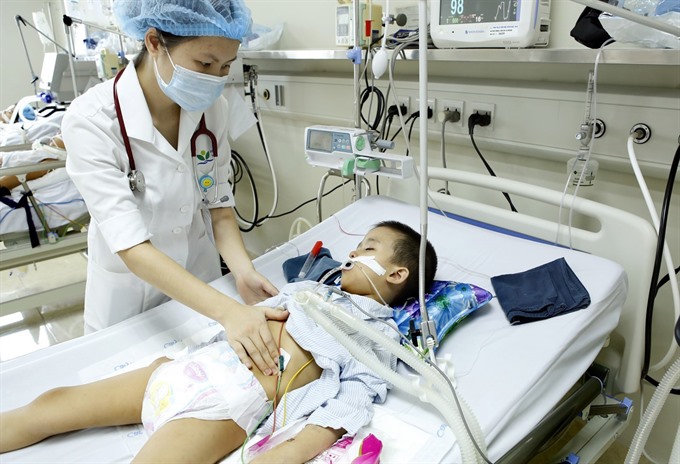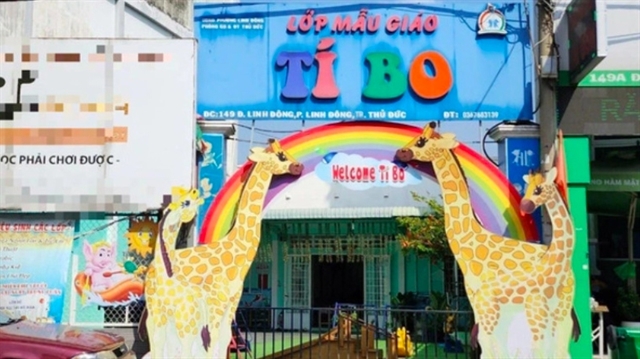.jpg) Society
Society

Nguyễn Duy Hải, 17, from Hà Nội, is a familiar patient of the Immunity-Allergy-Articulation Ward under the National Paediatrics Hospital (NPH) during the past 10 years.
 |
| A nurse takes care of a child with hand-foot-and-mouth disease at the National Paediatrics Hospital. Experts say that innate immunodeficiency disorders prevent children from fighting infections and diseases. — VNA/VNS Photo Dương Ngọc |
HÀ NỘI — Nguyễn Duy Hải, a 17-year-old Hanoian, has become a regular at Immunity-Allergy-Articulation Ward under the National Paediatrics Hospital (NPH) over the past 10 years.
Since a child, he has had frequent visits to the hospital for prolonged illnesses with symptoms ranging from cough, fever, malnutrition, to pneumonia and diarrhoea.
When Hải was eight years old, he was diagnosed with innate immunodeficiency.
Now Hải is 17 years old, but he could easily be mistaken for a primary student. However he does not want to gain weight, as he knows that as he grows, so will the dosage of his medicine—and the financial burden on his mother.
In another case, Lương Thu Trang, a six-year-old girl from the northern province of Thái Nguyên, was discovered to suffer from immunodeficiency more than a year ago.
Her family members said that since she was three months old, she has repeatedly had ear infections.
A surgery when she was five months old did not improve her conditions.
Last summer, in a health examination at the NPH, doctors discovered that her eyes were affected by fungus on top of corneal ulcer.
“Despite active treatment, her situation just gets worse and worse,” said Trang’s father.
The corneal ulcer was very small at first, but the sore gradually expanded and Trang’s pupil was becoming "bulging like a buffalo’s eye." At last doctors had to give Trang a fake eye, Trang’s father added.
Trang recently traveled nearly 100km from her hometown to Hà Nội to join a festival for children suffering from innate immunodeficiency held by the NPH.
Wishes
Associate professor Lê Thị Minh Hương, deputy director of the NPH and head of the Immunity-Allergy-Articulation Ward, said that innate immunodeficiency disorders prevented the bodies from fighting infections and diseases which healthy immune system could ward off.
Because of this, children often suffer serious and prolonged infectious diseases which can lead to serious side-effects or fatalities.
There are two different types of the disease. The first one is caused by genetic disorder while the second by serious malnutrition or living with HIV.
To treat the disease, the two best methods at present are bone marrow transplants and giving the patients medicine to boost their immune system.
In other countries in the world like Netherlands or France, said Hương, the sick children are tested for the disease before they reach six months old and would receive bone marrow transplants if needed, which helps increase recovery rate up to 95 per cent.
In Việt Nam, the children can receive immunity boosters that raise their resistance and their situation will improve gradually.
Patients over 16 years old can receive another special medication, but it’s quite expensive. For a 20kg child, the treatment expenses could be as costly as VNĐ20 million (US$880) per month, out of reach of most families in the country if the full amount is to be paid.
Health insurance pays all expenses for children under 6 years old, but the families of those over 6 must pay 20 per cent.
It was a big burden for most families of sick children, said Hương.
Hương hoped that in the future, health insurance would cover all expenses for innate immunodeficiency patients.
“With support from health insurance and good treatment from doctors, the patients will have a better future,” she said. — VNS


.jpg)





.jpg)
